ANTALYA – LYCIA 6 DAYS / 5 NIGHTS
The stops of our tour exploring Lycia, the Land of Light, from east to west, Phaselis ancient city, Kekova Sunken City, Lycia's capitals Patara, Xanthos and Myra, Myra's Port District Andriake, Lycian Civilizations Museum, St. Nicholas (Santa Claus) Church, at the end of the trip The boat trip in Dalyan will be King Tombs and Iztuzu beach... More information in the description below..
- Category: DAİLY EXCURSİONS & PACKAGES TOUR TURKEY
- Service Length: 45 Minutes
- Price:Free
Description
PHASELIS - MYRA - PATARA - KSANTOS
WITH ÜÇAĞIZ-KEKOVA & DALYAN-IZTUZU BOAT TRIPS
The stops of our tour exploring Lycia, the Land of Light, from east to west, Phaselis ancient city, Kekova Sunken City, Lycia's capitals Patara, Xanthos and Myra, Myra's Port District Andriake, Lycian Civilizations Museum, St. Nicholas (Santa Claus) Church, at the end of the trip The boat trip in Dalyan will be King Tombs and Iztuzu beach...
DAY 1 - PHASELIS ANCIENT CITY - CHIMAERA - OLYMPOS ANCIENT CITY
Phaselis
Phaselis is an old sea-port city dating back to the 7th Century BC. This ancient city is an extraordinary natural wonder where history, nature and sea meet.
Phaselis Ancient City is founded in 693 BC by the people of Rhodes. There are myths that the city was founded by Argos or Lindos colony in 691 BC. Together with the Lycian region, the city was taken under Persian domination by its commander Harpagos in 546 BC .
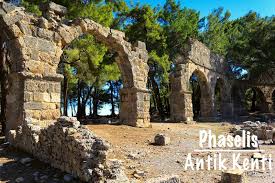
Than, for many years, the city was the most important harbor of the Lycia and one of its important cities. When the Union weakened, the city came under the rule of pirates. With the dominate of the Byzantine Empire, the rule of pirates ended. The city became a bishopric in the Byzantine period .
There are amazing ruins such as agueducts, agoras, baths, a theatre, Hadrian’s Gate, and an acropolis in Phaselis. This ruins underline the city’s historical importance.
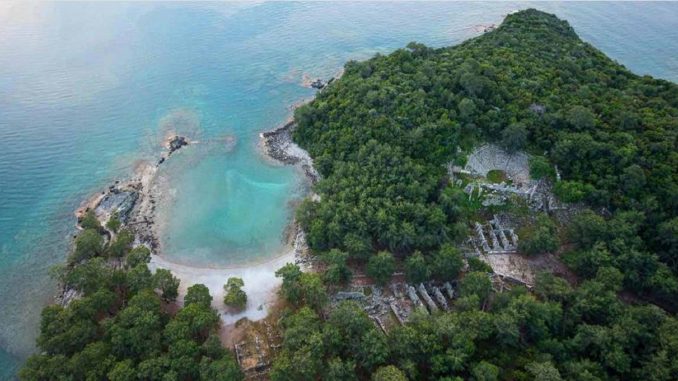
Phaselis has 3 beautiful beaches. Every port of this ancient city is also a beautiful bay. This beach is one of the most beatiful beaches on Antalya and Turkey. The sheltered, pebbled and sandy beaches around the bays are delightful and the waters here are calm and safe for children and young swimmers.
Olympos Ancient City and Chimaera
Olympos is the second most important port city after Phaselis on the southern coast of Antalya. The ruins of Olympos, which have reached to the present day, are generally scattered from the east to the west at the mouth and at the mouth of a river that flows into the sea.
In this ancient city there were harbor structures, necropolis, medieval bath, mill, water canal, church, amphitheater, basilica and other residential buildings. The river, which divides the city into two in the ancient period, was taken into a canal and both sides were used as scaffolding and connected with the bridge.
The most interesting of the ruins is the sarcophagus of Captain Eudomus who was brought to light by the excavations carried out by the Antalya Museum.
The building known as the Necropolis Church is located in the northwest of the ancient city divided into two by Olympos River, to te south of the entrance to the northern necropolis.
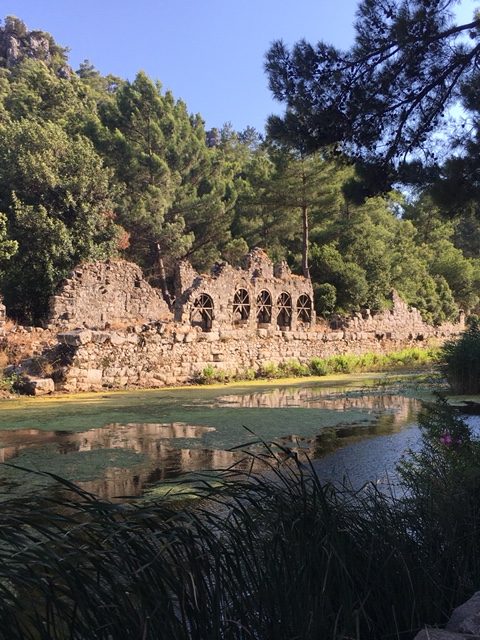
Of the church located by the side of the river, today only the northern nave and the attachment adjoining the building at the northern face remains.
The central nave, apse and southern nave were destroyed as a resukt of a flood that occured in 1969. Therefore there are no architectural remains belonging to the apse, naos and southern nave of the church.

The design of the mosaics in the Olympos bath is enhanced by the play of light while a temple gate and a theatre are of interest along with the other walls and towers around the bay which date from the Middle Age.
North of Olympos, up from Çıralı Beach, is Chimaera (Yanartaş) (at a height of 300 m) where, according to mythology the fire breathing monster, Chimaera, was slain by the Lycian hero Bellerophon who was mounted on his winged horse Pegasus.
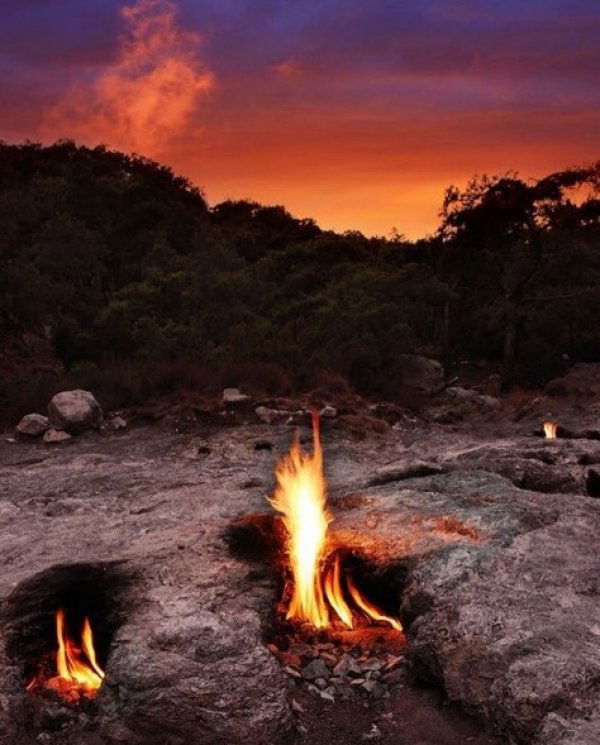
Yanartaş is a magnificent natural wonder at an altitude of 300 m above sea level, 600 meters from the seaside of Çıralı. The flames are most dramatic at night.
The Chimera (Yanartaş), the eternal flames on a rocky mountainside above Çıralı village near Olimpos. T
he flames are burning a sort of methane gas that has been venting from the earth on this rocky slope for thousands of years.
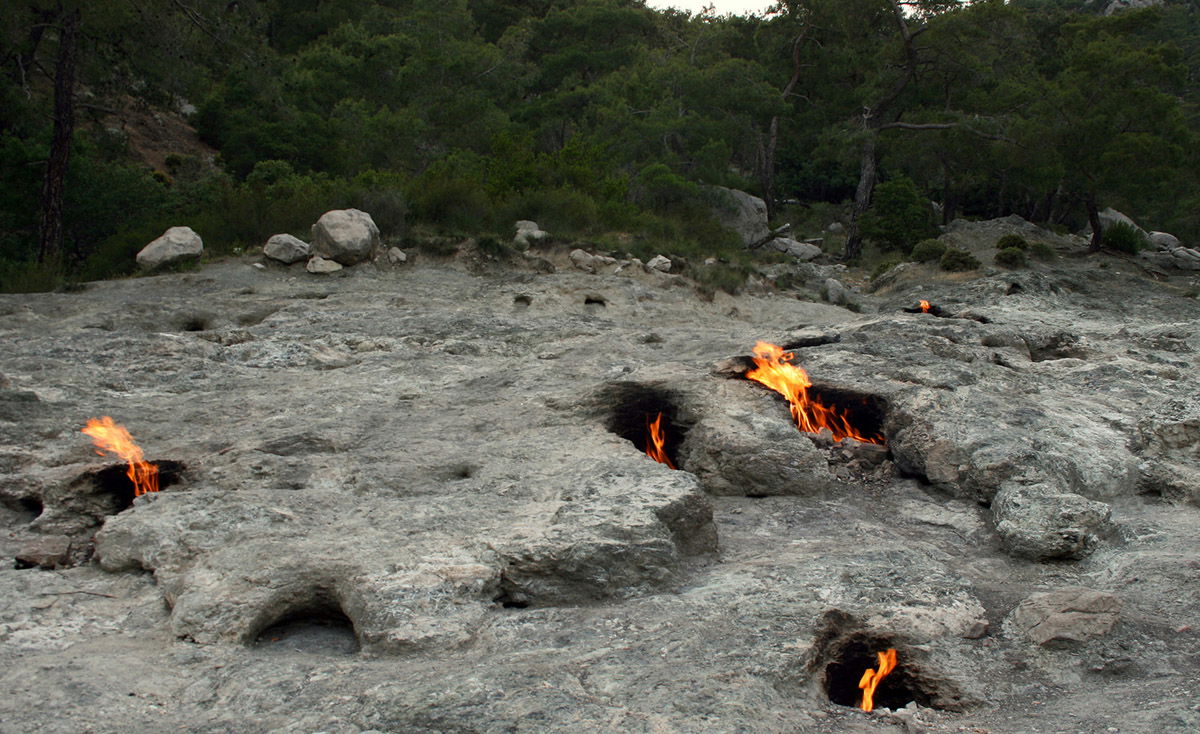
Nearby you can see remains from the Byzantines who attached religious importance to the area.
Dinner and our hotel in Demre
DAY 2 - ANDRIAKE - MYRA - DEMRE CITY OF SANTA CLAUS - KEKOVA
After breakfast at our hotel
Andriake
The ancient city, located in Çayağzı locality of Demre district in Antalya, is the port city of Myra Ancient City in the district center. The "Museum of Lycian Civilizations" is located in the section where excavations are continuing.
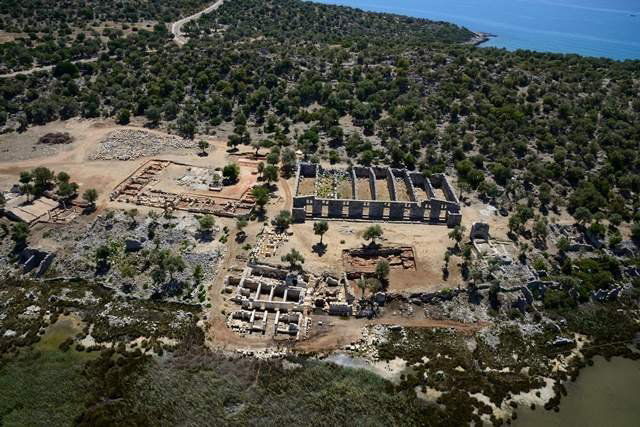
Andriake, king of the Seleucid dynasty in 197 BC. When Antiokhos captured the city from the Ptolemies, the story reached its peak. In ancient times Lycia had an important port like the cities of Patara and Phaselis. Andriake Ancient City spans both sides of the bay where it is located.
The museum building, the Granarium structure (Horrea Hadriani / Imperial Silo), which was built in 129-130 AD, has been repaired. The 2307 m2 wide building consists of 8 sections.
The interior of the museum is composed of eight rooms arranged in the name of the cities of the Lycian Union Myra, Patara, Xanthos, Tılos, Arykanda, Pınara, Antiphellos, Olympos.
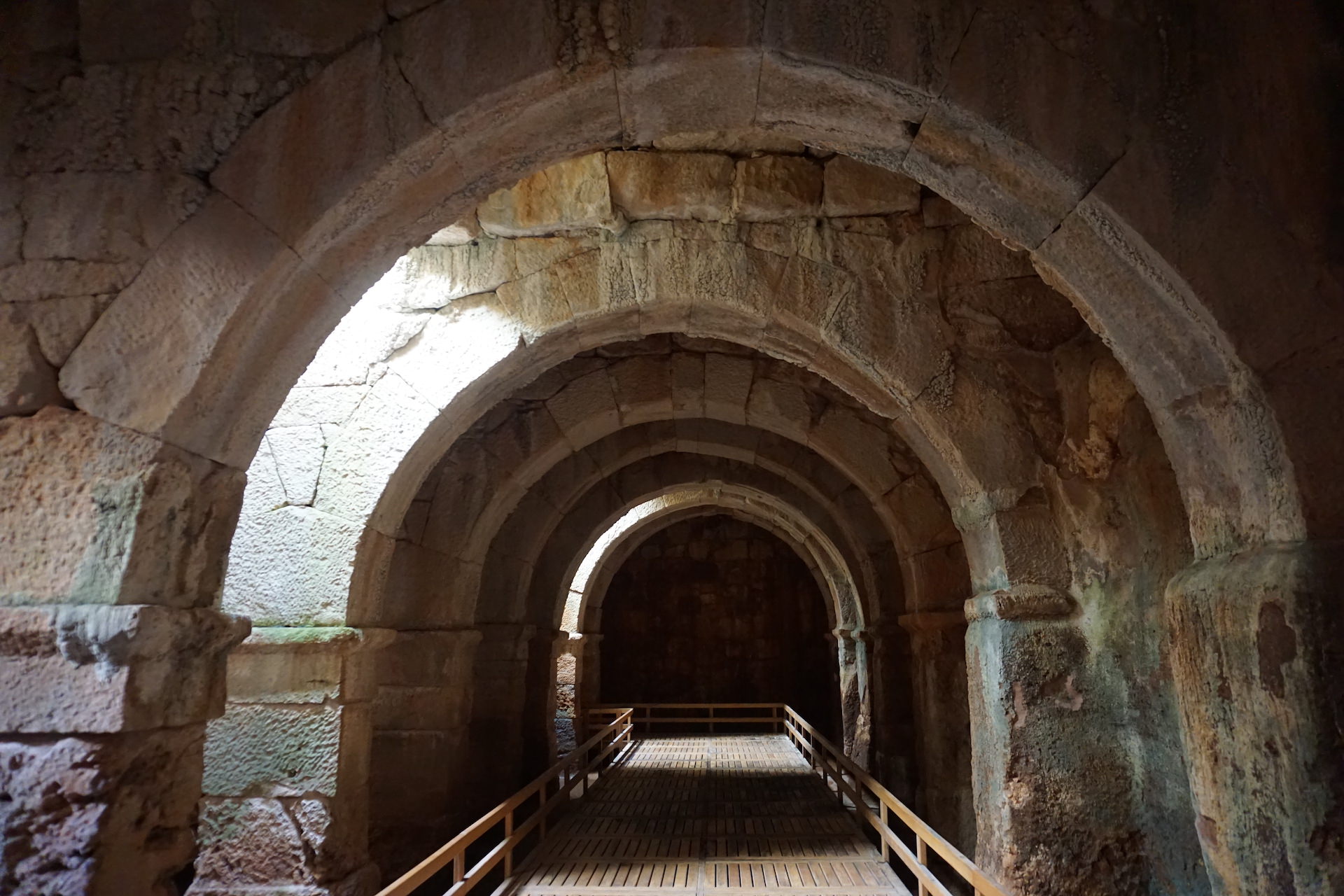
In the rooms, Lycian history, geography, epigraphy, currency, economy and social life and religious culture are introduced with works in historical development, information panels adapted to the content of the rooms , animations and interactive presentations.
Myra (Demre) Ancient City & Santa Claus
The story of Myra, which was for a time the capital of Lycian civilization, begins with the relief tombs and reaches the sea with the port of Andriake. This is also known as the place where the goddess Kybele was Artemis.
Myra, between Kaş and Finike, maintained its reputation throughout the Middle Ages thanks to the diocese of Saint-Nicolas. Myra, one of the six major cities of the Lycian Confederation with three voting rights, takes its name from the Myros River (Demre Stream) where it was founded. The city's water needs were supplied by the system of canals carved into the rocks at the edge of Demre.
The ancient city of Myra is best known for Saint Nicholas and famous above all for the cave tombs from the Lycian period.
Myra, a leading city of the Lycian Union.
It is not known exactly when the city was founded, however, finds have proven that it has existed since the 5th century.
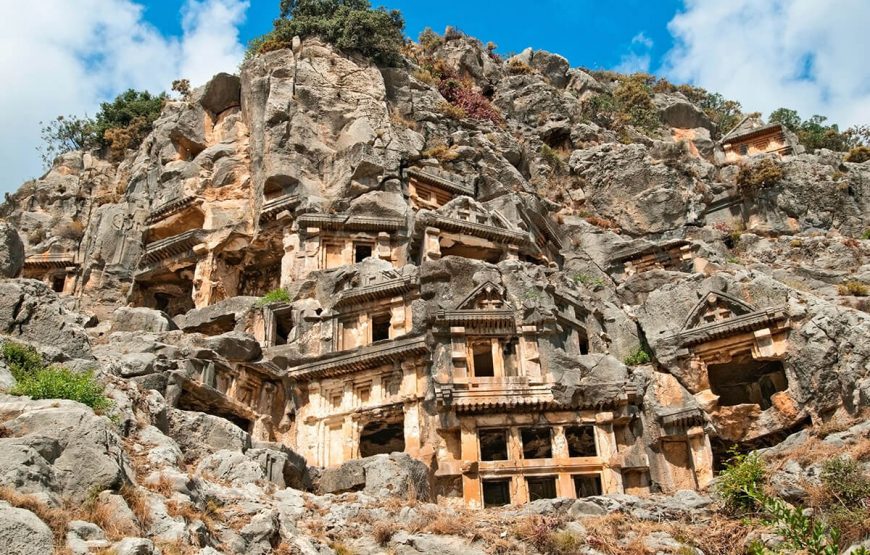
It was one of the six most important cities of ancient Lycia (others: Tlos, Pinara, Patara, Xanthos and Olympos).
Myra was one of the 6 cities that had 3 votes in the Lycian confederation during the Byzantine era,
Myra was one of the main cities in terms of administration and religion.
Myra is famous in particular for the cave tombs from the Lycian period, the Roman theater and the St. Nicholas Memorial Church from the Byzantine period (Santa Claus).
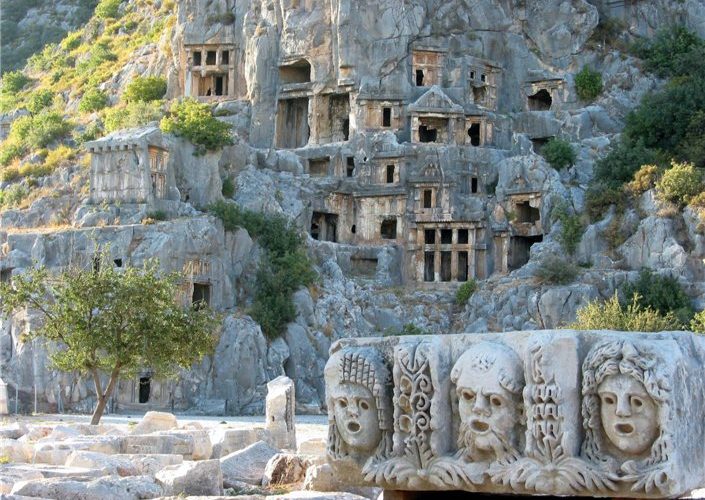
Rock tombs, Lycian inscriptions, and coins show that Myra was at least present in British Columbia in the 5th century. Myra became a big development in the 2nd century.
In the city, which is the metropolis of the Lycian Union, many buildings were constructed and repaired with the help of wealthy Lycians.
The ancient city of Myra is best known for Saint Nicholas.
Saint Nicholas, who died here in 342 AD, was the bishop of this Mediterranean city in the 4th century.
Every year in December, the commemoration ceremony of St. Nicholas takes place, attracting many tourists who spend their Christmas holidays on the sunny coast of ancient Lycia.
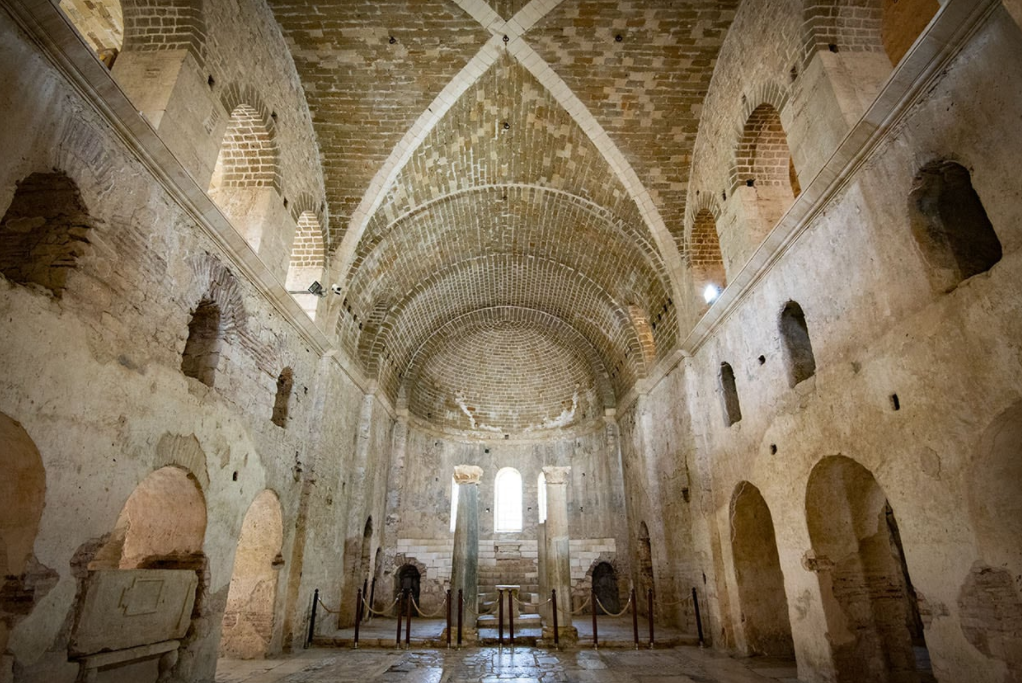
Myra owes its fame to the fact that Saint Nicholas became the bishop of the city and was beatified by a saint after his death and a church was built in his name.
The ancient city of Myra is of particular importance for Christianity as it is the city where Saint Paul and his friends are considered the most famous of Christian missionaries.
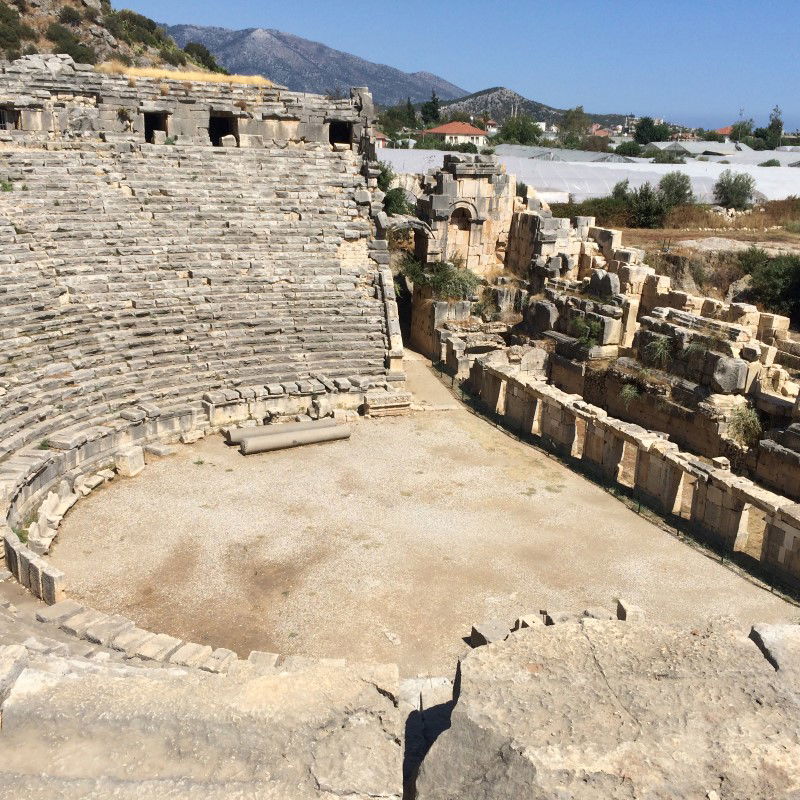
The largest amphitheater in Lycia
Myra is well known for its amphitheater. This amphitheater is the largest in Lycia. This structure reflects the characteristics of a well-preserved Roman theater, with both rows of seats and stage buildings.
Kekova boat trips
The sunken city of kekova: paradise exists!
What’s the point of visiting a sunken city, you may ask?
Granted, the principle of a sunken city is that is lies under water, and as a result, it is mostly invisible. But in the case of Kekova and Simena, some parts are barely submerged, and the crystal clear water on top gives them a mysterious touch.
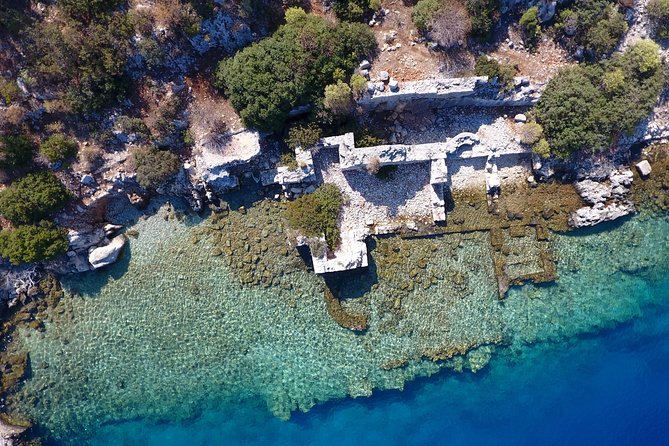
In any case, as we have said before; anything that involves a boat trip catches our attention. And the boat trip around Kekova and Simena is undoubtedly one of the most beautiful ones we’ve ever made. Nature is stunning, history distinctly visible; therefore the whole visit is just one continuous wow-moment.
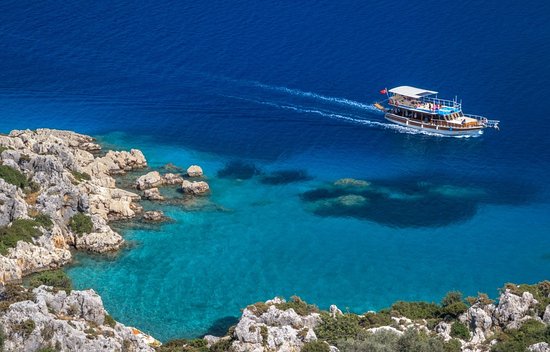
Kekova is a small and very delightful Turkish island near Demre. The uninhabited island lies opposite the villages of Kaleköy and Üçağız. The partly sunken ruins on the northern side are the result of an earthquake in the 2nd century. The whole shoreline of the island shows the remains of Dolikisthe, with a dockyard, plenty of steps and stairs, gates, and even the remains of a Byzantine Church; a fascinating sight
Dinner and our hotel in Kaş
DAY 3 - PATARA ANCIENT CITY - XANTHOS - SAKLIKENT CANYON
After breakfast at our hotel
Patara: the birthplace of Apollo and Santa Claus
Patara, was a main port of ancient Lycia and one of the main trading centers in the eastern Mediterranean. It was the capital of the Lycian League. The reason Patara was such an important port city was that one of the three Mediterranean grain warehouses called Granarium was found in Patara. Patara was a port where grains transported from Anatolia to Rome are stored.
According to mythology, Apollo was born here. In general, it is considered that Apollo was born in Delos, there are archaeological articles claiming that Apollo was born in Patara. Legend has it that this ancient city was founded by Patarus, a son of Apollo. It is believed that the name of the city comes from its founder.
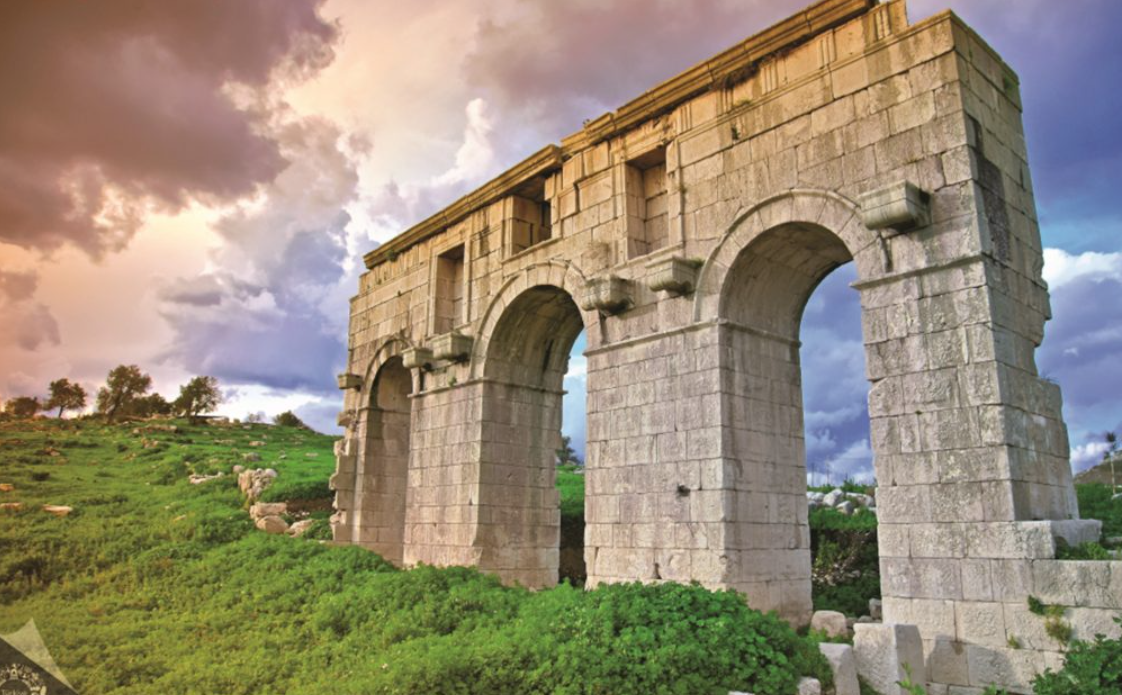
Patara is also known to be the birthplace of Saint Nicholas Saint Nicholas spent his youth in Patara. It is believed that the miracles of Saint Nicholas took place in Patara. Therefore, Patara also maintained the memory of the saint.
Because Saint Nicholas was the bishop there, the church of Demre bearing his name and his tomb are there, Demre is the colony most associated with Saint Nicholas.
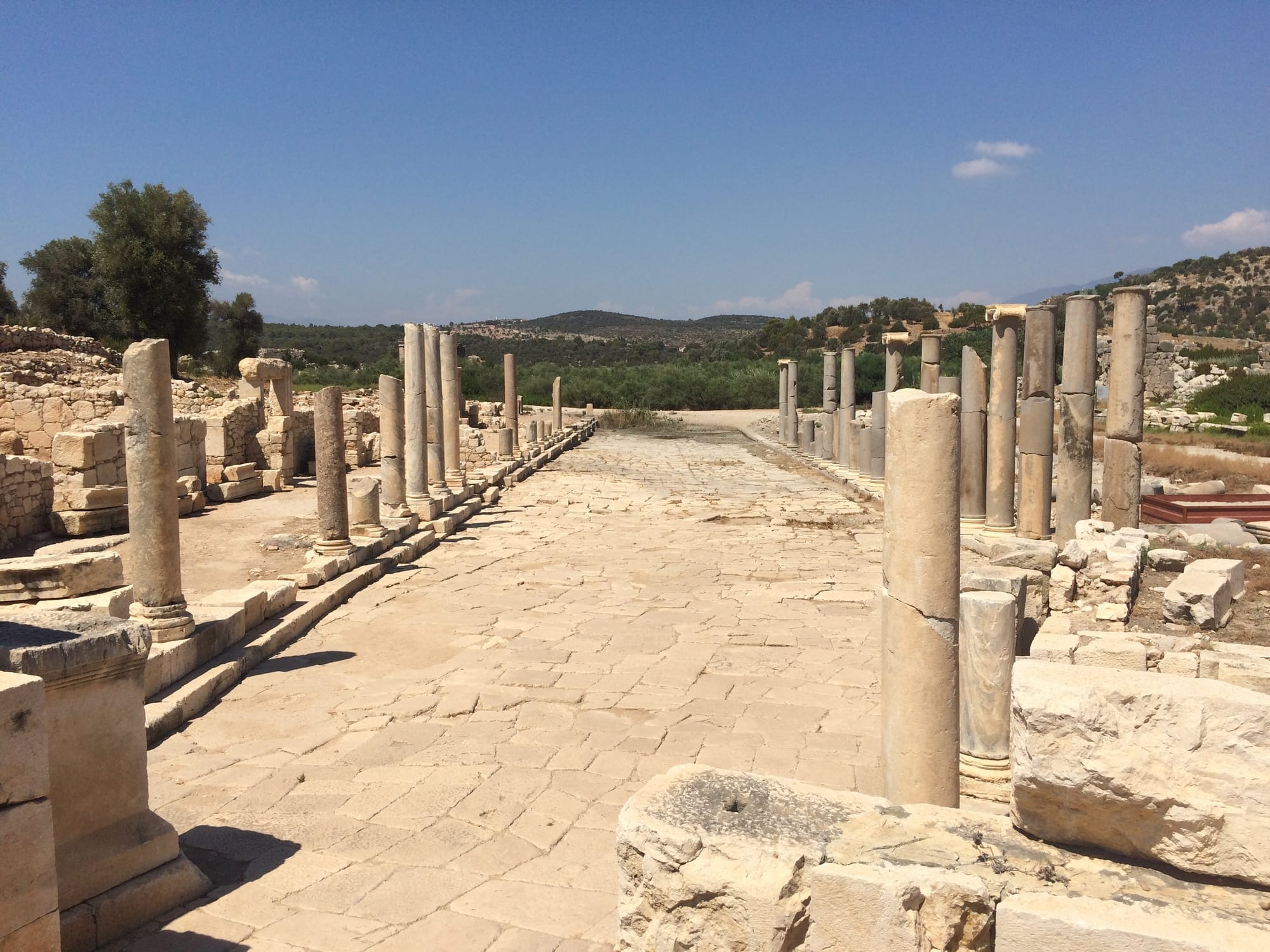
There are extraordinarily well preserved and interesting ruins such as the Arc de Triomphe, the Lighthouse, the theater, the Boule (council house), the large colonnaded street, a temple and numerous chapels.
But a large part, same commercial port of the ancient city rendered by quicksand.
Theater
There is a theater building located south of the Council House. From the inscriptions it appears that the theater was rebuilt in 147 years after the earthquake.
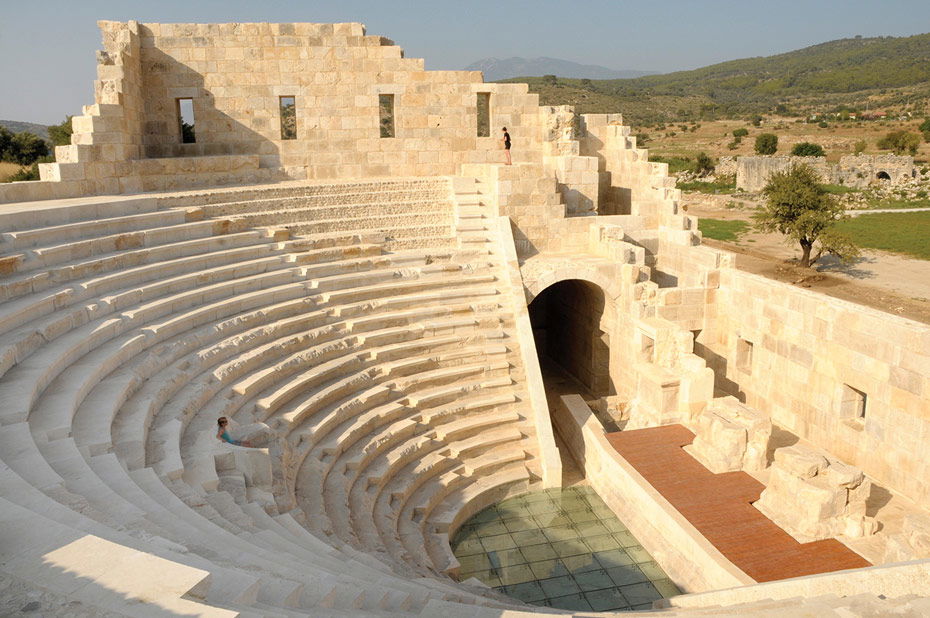
Council House
Patara was one of the six cities with three votes in the Lycian Union. For this reason, state administrators have held meetings at the Council House. This 21-person building was able to accommodate 1400 people.
Xanthos Ancient Site
Xanthos was the capital of ancient Lycia. It was the largest administrative center of Lycia in ancient times. Xanthos was inscribed on the List of World Cultural Heritage by UNESCO due to the specificity of Lycian civilization and the importance of the finds obtained during excavations. Sarpedon, who encouraged Prince Hector with his poem on the Trojan War, lived in this city.
This city, capital of the Lycian Union until the end of the classical period, was built on two hills overlooking the plain on the banks of the Xanthos river
Findings from the excavations show that the city has been used as a settlement since the 8th century BC. There was no evidence that the city had been used as a settlement before that date.
According to Herodotus, when the city was dominated by the Persians, after the heroic resistance of the Xanthos, they set the city on fire and delivered them to the Persian commander Harpagos in a devastated way.
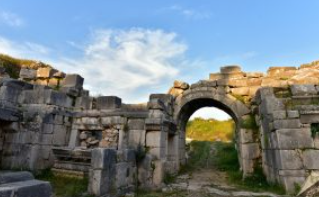
Alexander the Great conquered this city in 334 BC. After the death of Alexander the Great, Xanthos came under the reign of the Egyptian Ptolemaios in 309 BC, then of Antiochus III of Syria.
Xanthos, the capital of the Lycian League in the 2nd century BC, came under Roman rule in 42 BC. Most of the survivors were built during the period of the Roman Empire. Xanthos, the episcopal center under Byzantine rule, acquired many new structures during this period. After that it was under the sovereignty of Byzantium and remained under Byzantine rule until the Arab invasions of the 7th century. The Arab invasions in the 7th century AD caused the city to lose its importance.
The theater, the tomb of the harpy, the Nereid monument, the agora and an inscribed monument are interesting, as they are a mixture of ruins from the Lycian, Roman and Byzantine times. At the Lycian cult center of Letoon, 6 km further, there are three temples dedicated to Leto, Apollo and Artemis.
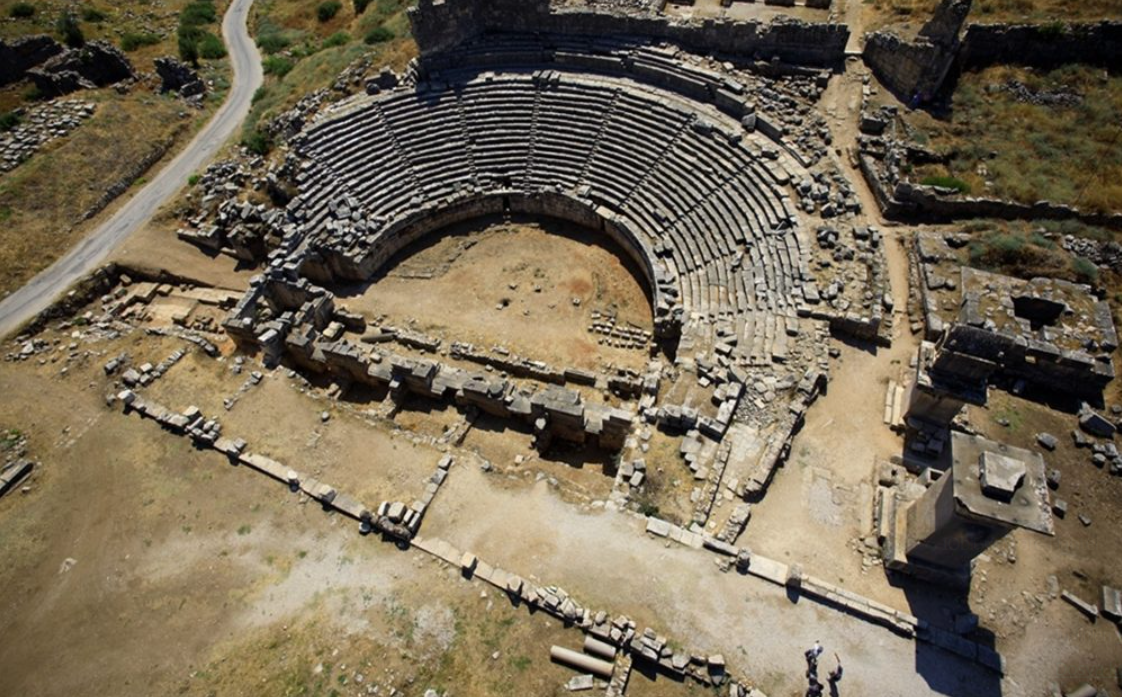
This tomb is believed to be the tomb of Kybernis, who died at the Battle of Salamis in 479 BC.
The reliefs on the surface of the Harpy Monument were taken to England by Charles Fellows in 1842. Today it is on display in the British Museum.
Nereid monument
According to the British Museum, Nereid Monument, the most famous Lycian tomb, was probably built for Arbinas, King of Lycia, and his family.
Saklikent Canyon
Saklikent Gorge is about 300 metres deep and stretches out for 18 kilometres. While you can’t walk the whole way along it, the path after the water trap has some of the best examples of what is on offer.
The water is shallow and slow-moving in these parts. At times the path is wide, sometimes it narrows to a point where you have to climb over boulders to pass.
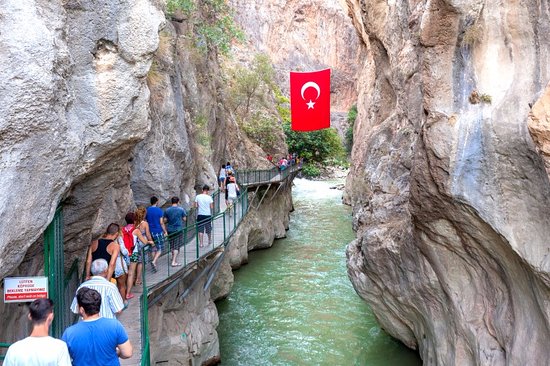
There’s a slight chill on the ground with the sun unable to break through to the bottom – but the rays of light which do shine through a crack bring a splash of colour to the red walls.
Every turn of the path seems to reveal a slightly altered aspect of the canyon. The rocks change colour, the water interacts differently with the ground, the light shines through from another angle.
To walk through the gorge is such a pleasure
Dinner and our hotel in Fethiye
DAY 4 - KAYA VILLAGE (GHOST TOWN) - PINARA ANCIENT CITY - BABADAĞ
After breakfast at our hotel
Kaya Village (Ghost Town)
Few kilometers from Fethiye climbing past the ancient fortress and rock tomb of King Amyntas, the pine trees give way to the bucolic landscape of the Kaya Village. The village is the perfect place to walk and explore, taking in the haunting view of the deserted Greek village of Levessi. There are several traditional cafes to stop and get refreshed and also a growing number of restaurants, some of the most popular of these are the BBQ restaurants, where you are able to sit at traditional Turkish tables and sample different mezes and BBQ your own food. Try horse riding or cycling around the village.
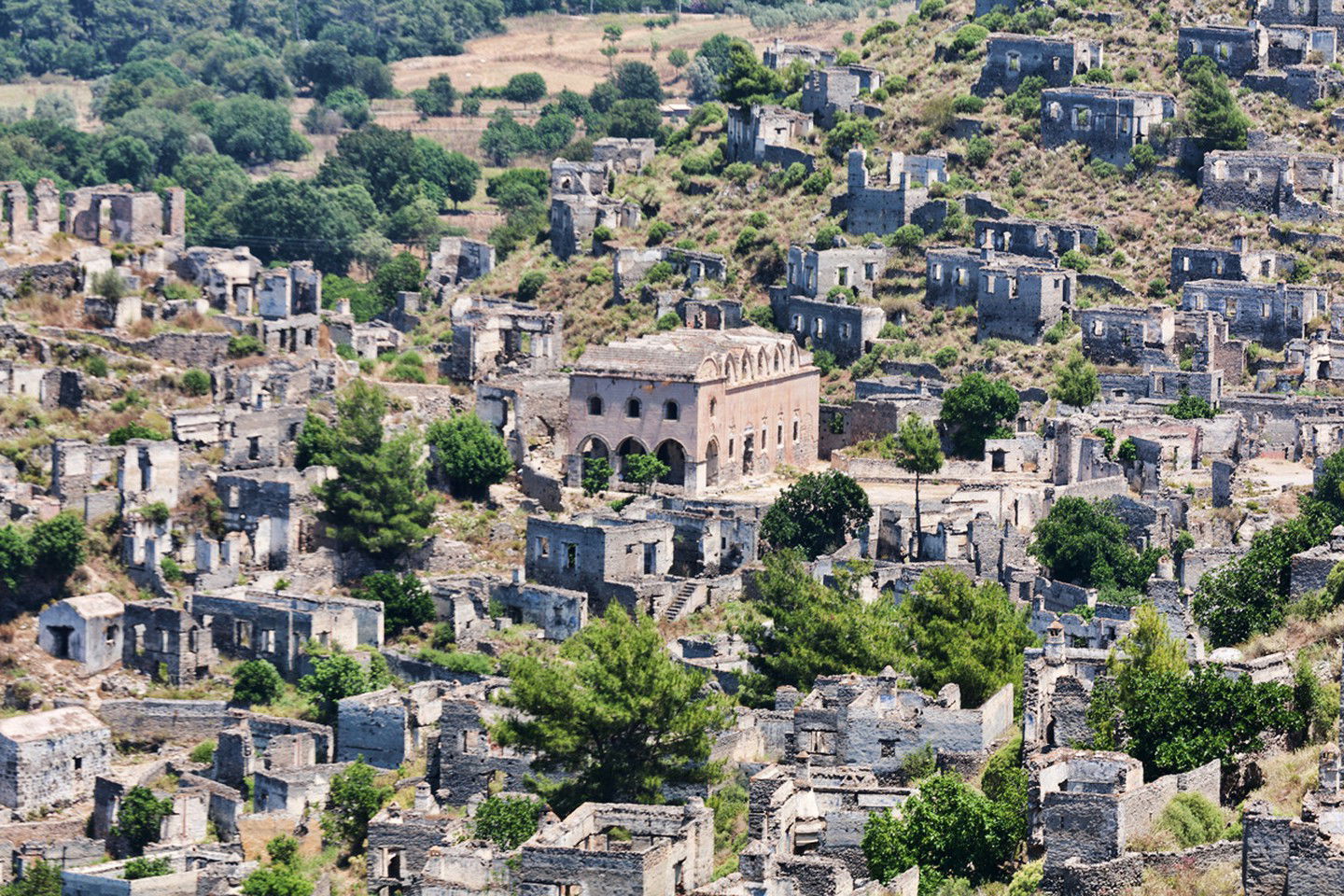
The ghost town of Kaya has been desserted since 1923, there was a population exchange agreement between Turkish - Greek governments. It was agreed that the Greek people in Turkey would return to Greece and the Turkish people in Greece would return to Turkey. The Grek people from Kaya returned to Greece, however the Turkish people in Greece did not want to return as the Greek government did not want to pay the indemnity for any of the lando r homes they owned in Greece.
Due to this the houses that hed been reserved for the people to return stood empty for many years. The people who moved to the area did not setle in the stone houses built on the hill side, instead built houses on the flat land. Before the population exchange Kaya Koy was known to have around 25,000 inhabitants, now there are just 2000.
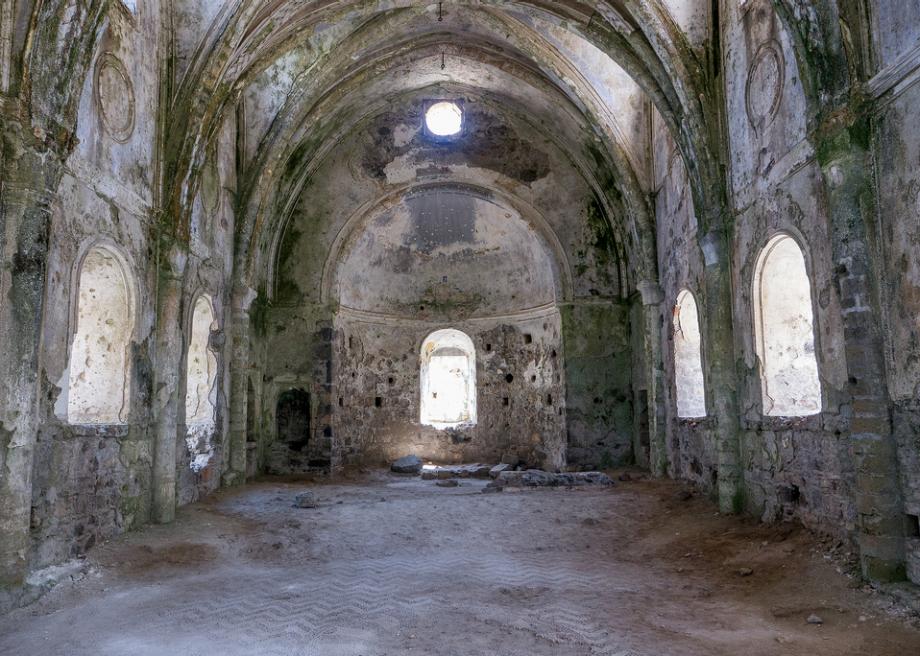
The old houses on the hill side were left and can now be seen with broken windows and door, looking very lonely and desolate. The houses are now under protection, but this comes a little late. Levissi village was known to have two churches and 14 chapels, these are now derelict, although the lower church has some interesting features, which are worth a look. There is some restoration work that is ongoing in the area.
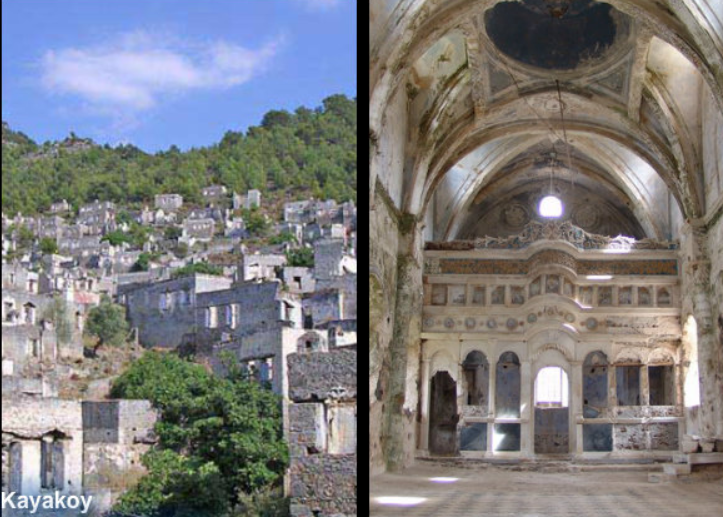
Pinara Ancient City
Pinara ancient city is located at the foot of Mount Cragus. The city is reachable after a walk from a nearby village. Athough it is a big cith with 3 votes in Lycian League, The city is not mentioned in ancient scripts often.
Sir Charles Fellows who discovered the ancient city says rises a singular round rocky cliff (the pinara of the Lycians), literally speckled all over with tombs.
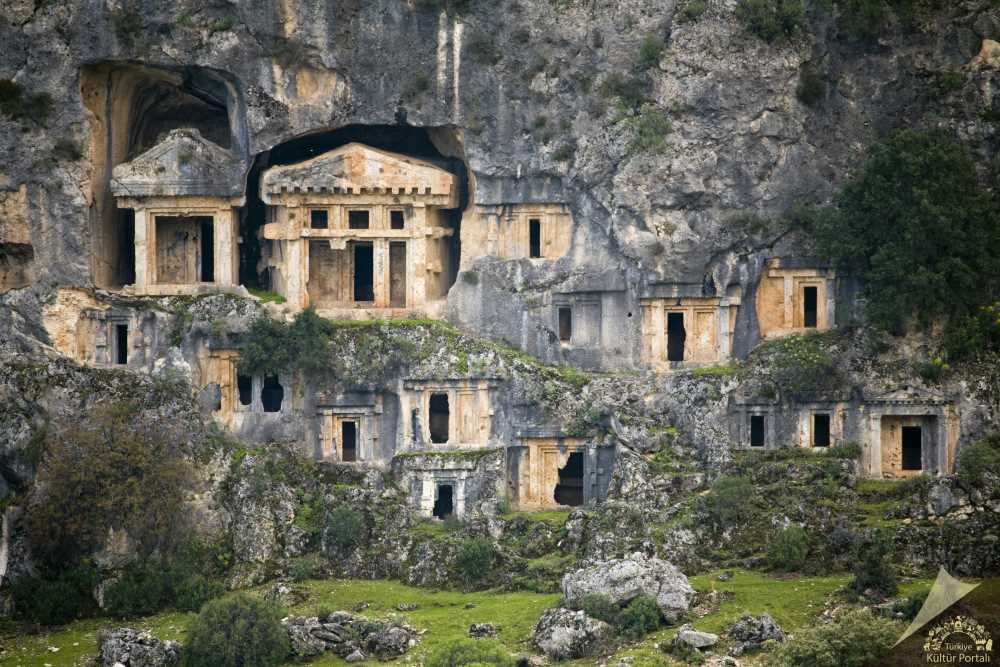
Beneath this cliff lie the ruins of the extensive and splendid city. The theater is in a very perfect state; all the seats are remaining, with the slanting sides towards the proscenium, as well as several of its doorways. The walls and several of the buildings are of the Cyclopean masonry, with massive gateways formed of three immense stones.
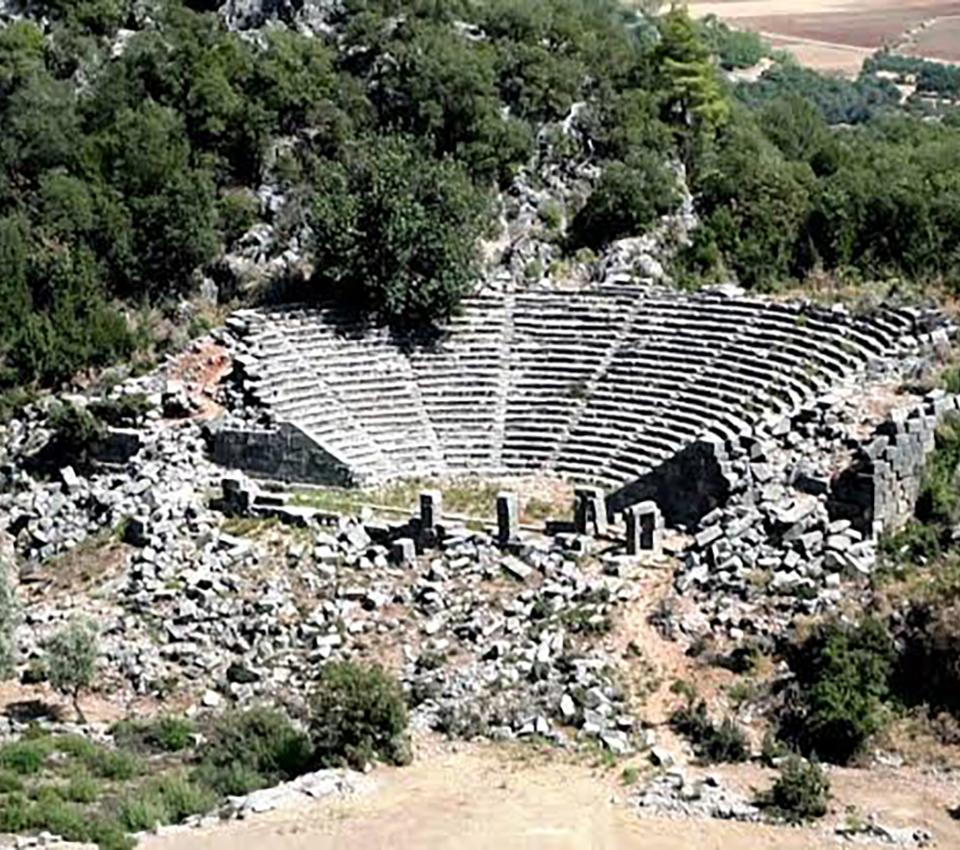
The tombs are innumerable, and the inscriptions are in the Lycian characters, but Greek also occurs often on the same tombs. Some of these rock-tombs are adorned with fine and rich sculptures.
Babadağ
Optional: Possibility of paragliding in the Babadağ mountains with superb views ... Want to take the leap? Let us know.
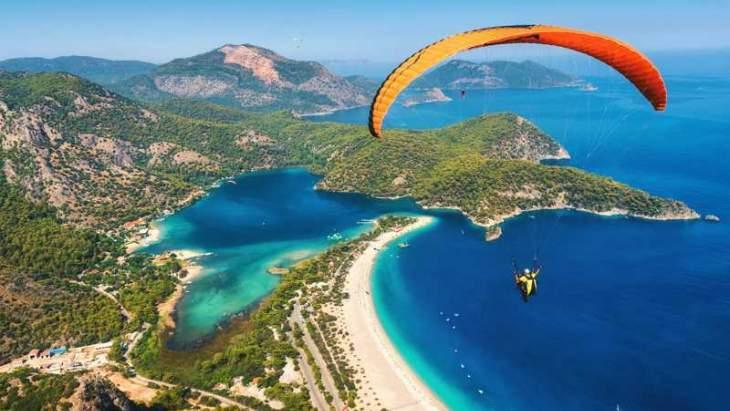
Dinner and our hotel in Dalyan
DAY 5 - MUD BATH & DALYAN-IZTUZU BOAT TRIPS
After breakfast at our hotel
Combining the Mediterranean and the Aegean, Dalyan attracts numerous local and foreign visitors every year with its historical texture, nature, lakes, sea and touristic places.
Dalyan, which is remembered with the mystery of the Caretta caretta sea turtles, mud bath, healing hot springs, the ancient city of Kaunos and the Dalyan Rock Tombs, enables you to have an unforgettable holiday with your family or group of friends. While enjoying the warm sun and the green nature in the daytime, you can relieve the tiredness of the day against a magnificent view in the evening and rest your soul.
which is one of the oldest settlements Caunus also home to the resort of the ancient city in Turkey, charms its guests with royal tombs carved into the towering rock.
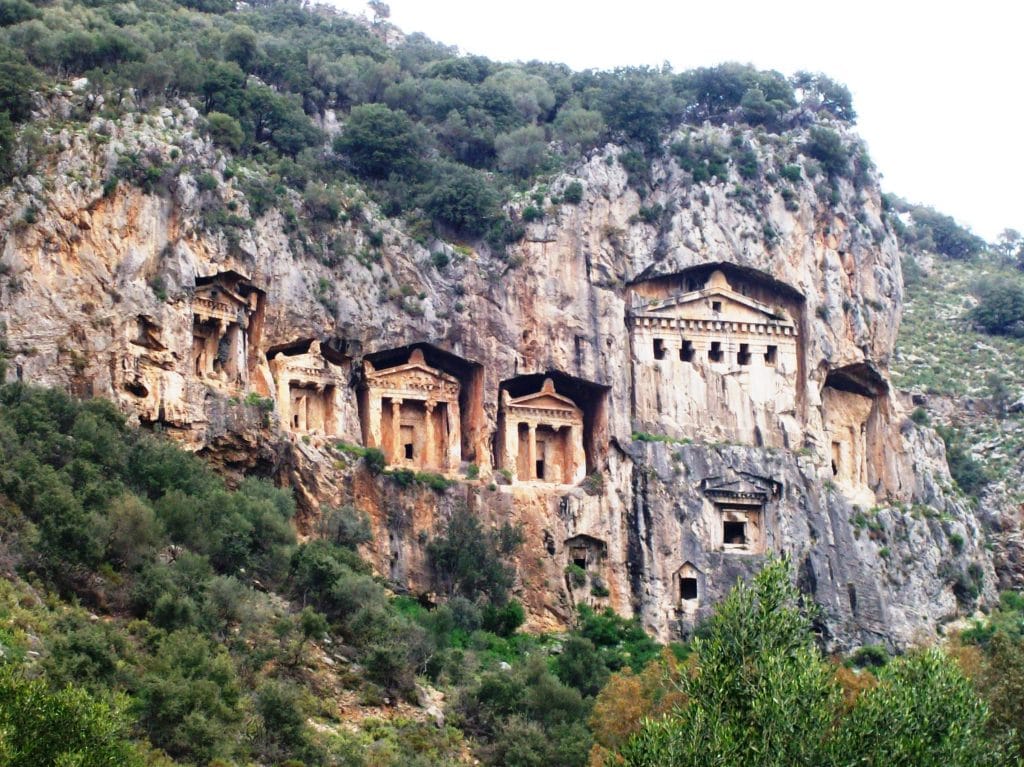
In addition, the town is known as the habitat of caretta caretta sea turtles, nile turtles and blue crabs. The April-September period, which is the spawning period of the Caretta caretta sea turtles, offers a different excitement to the visitors.
According to ancient belief, the higher the tomb of the man, the closer to the god, and therefore the tombs of kings and important people were dug into the rocks.
Kaunos'lular of (kbID of) the rock tombs in Dalyan with magnificent works of art "Turkey Promotion films also often seen as" one of the most important symbols. The rock tombs welcome their guests who reach Dalyan either by sea or by land with a warmth coming from the depths of history.
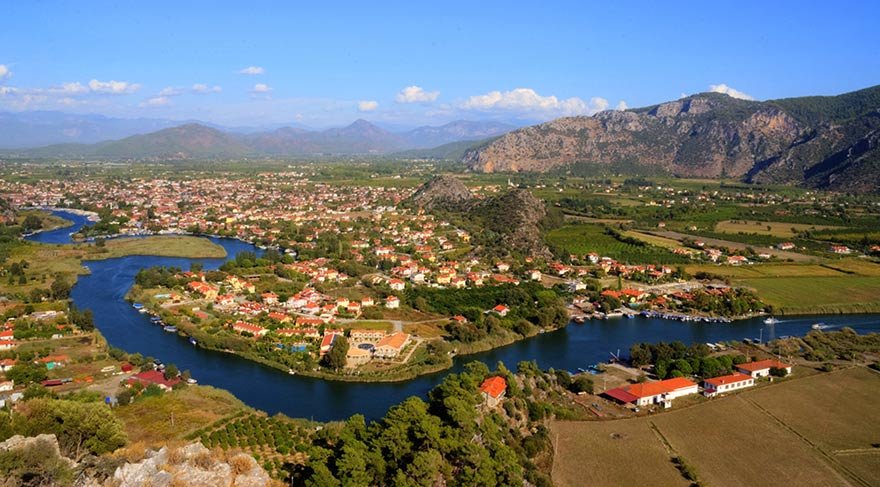
The group of six Rock Tombs, which fascinates the audience, together with the largest tomb that is thought to have been left unfinished after the invasion of Persians or Alexander the Great, is undoubtedly the most important of the tomb types in Caunos.
In addition to this type of rock tomb with a temple façade, rectangular deep Hollow Tombs, Niches and Sarcophagi, also known as "pigeon's nest" carved into the rock, specially selected Monumental Tombs and mostly Cist Tombs opened on the slopes outside the city wall, on the one hand, While they reveal the richness of the type, they also inform us about the tradition of burial.
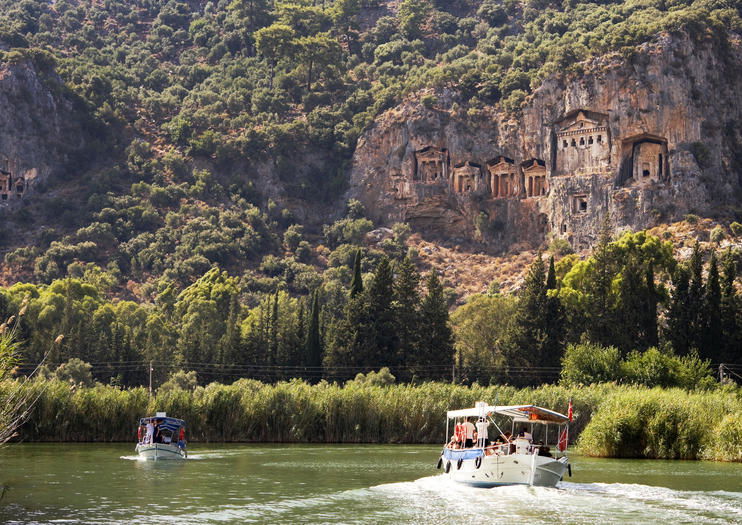
None BC. Among the rock tombs that cannot be dated before the second quarter of the 4th century, the most important group are the ones with temple façade: The triangular pediment carried by the columns between the side walls, behind the facade, there is a front room accessed by steps and a tomb chamber opened with a door.
Dead beds were made in front of the back and side walls of the near-square burial chambers; some of them were also made of presentation platforms. The small niches in which the remains of the cremated dead are placed are placed vertically, each covered with a plate shaped like a temple façade.
The long side edges of the chest graves opened side by side were obtained by placing plate blocks of equal heights in general; narrow facades, one facing the bedrock, mostly formed a single block and were covered with large Sal stones.
The raft stones were first covered with a soil layer and this was covered with a thick mortar mixed with large and small pebble stones. These types of graves are mostly dated between BC and 2nd century AD.
In Dalyan, especially when the rock tombs are illuminated, it appears as a separate beauty.
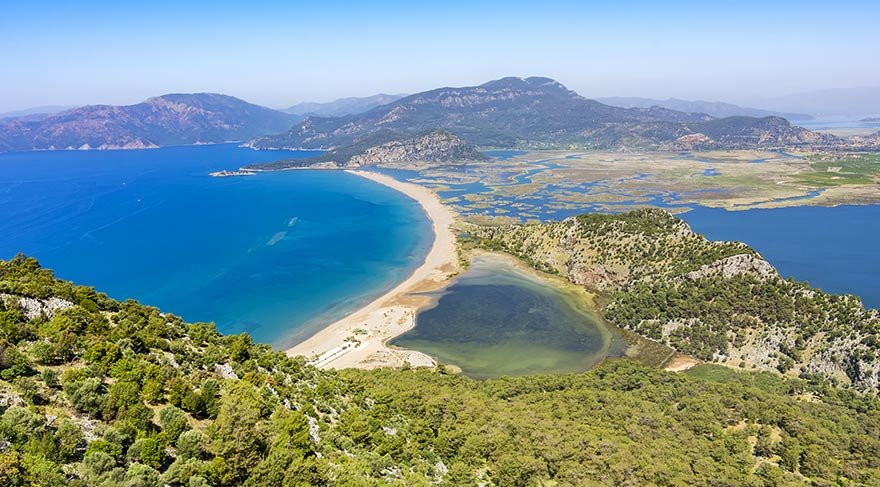
"Kings look high." It is still unclear by what technique the rock tombs, following Dalyan, were built thousands of years ago. With what tools could those rocks be carved? While these were being made, only the burial chamber was not carved.
The mountain was carved outside the grave chamber and the grave was made independent from the mountain. A person can move around the tomb comfortably. It is thought that the purpose of this was to give the tomb of the king a temple atmosphere.
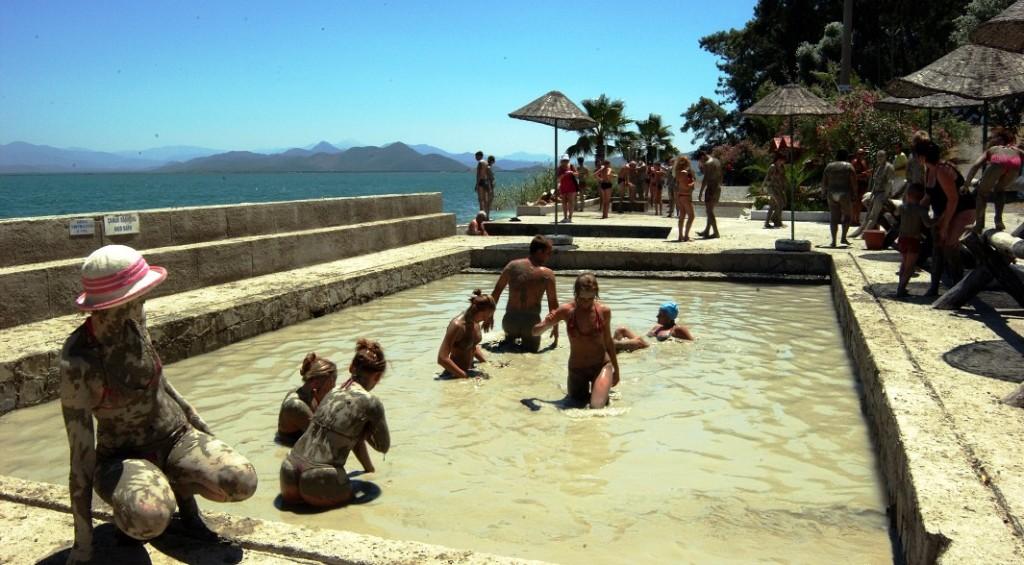
B.C. It is known that it was used by the people of Caunos in 100 years. During the Byzantine period, accommodation facilities were expanded and built.
Today, the facilities built during the Byzantine period have been flooded by Köyceğiz Lake. It was converted into a comprehensive hospital in the Roman period. According to the sources, it was written at the entrance of the hospital that "death cannot enter here in the name of the gods." Ölemez Mountain is also named after it.
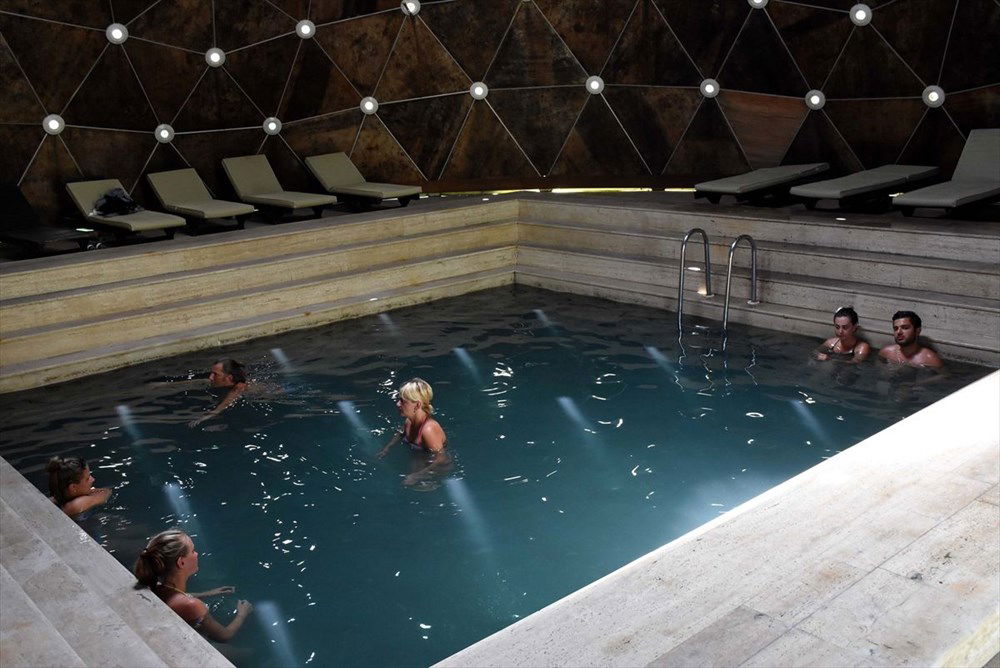
Sultaniye hot springs are shown to be healing as a direct treatment for many diseases such as rheumatism, kidney and urinary tract disorders, metabolism disorders, mental fatigue, skin and gynecological diseases.
The water of Sultaniye Thermal Springs contains calcium chloride, calcium sulphate, calcium sulfur, bromide, radon and radioactive substances.
Water temperature is 39 degrees Sultaniye Hot Springs is Turkey's highest radioactivity with spa (98.3). In terms of radon value, it ranks second in the world after the hot spring in Indonesia. It has a rehabilitative feature due to its high radioactivity. There is beauty mud here. It is said that when applied to the body, it softens the skin and removes wrinkles.
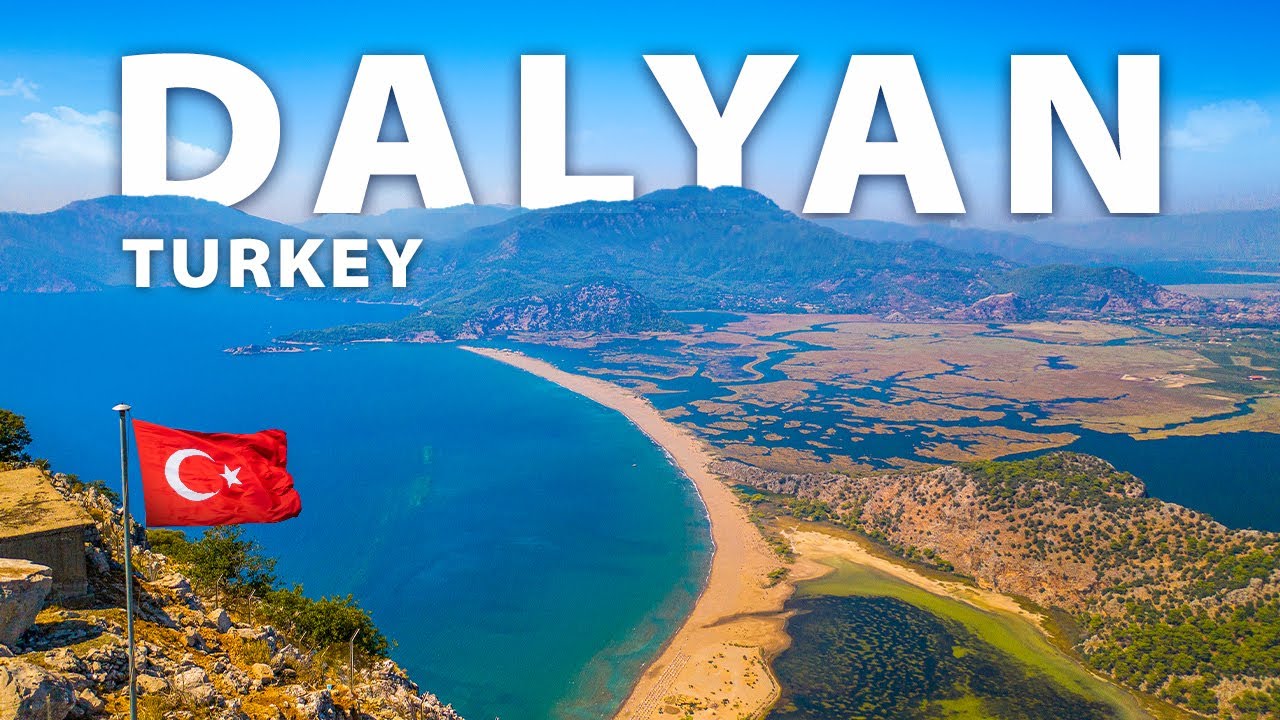
Dinner and our hotel in Dalyan
DAY 6 - RETURN ANTALYA
After breakfast at our hotel
After completing our visit, we move to Antalya, we arrive in Antalya with a journey of approximately four hour with stops to rest, eat during the trip..
PRICE INCLUDES:
*Hotel pick up-drop off
*Hotel with half board (Only breakfast at the hotel is included )
*Guidance
*Entrance fees
OPTIONAL EXTRAS:
All meals and drinks are not included.Only breakfast at the hotel is included
Important information
Please note that all times are approximate and subject to change.
Note: The Guide may make corrections and adaptations in the course of the tour program according to the conditions and situations of the planned places of visits
Are you looking for a different Turkey tour?
Please check our other Turkey Tours for inspiration or send us an E-MAIL with details of your dream Turkey trip such as your ages, hotel preferences, personal interests and travel type.
We will get back to you with a suitable itinerary.
We are looking forward to hearing from you.
At your request, we can take care of all the procedures relating to reservations (hotel, car, etc.), transfers (airport-hotel) and other additional services depending on the type of stay chosen.
For more information or reservation please contact us by mail or WhatsAap
- Antalya, Turkey
 +90-5385823609 - ENG -TR - FR
+90-5385823609 - ENG -TR - FR +90-5435384606 - NL / FL - DE - ENG
+90-5435384606 - NL / FL - DE - ENG- medical.travel.turkey@hotmail.com
